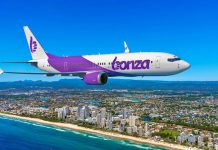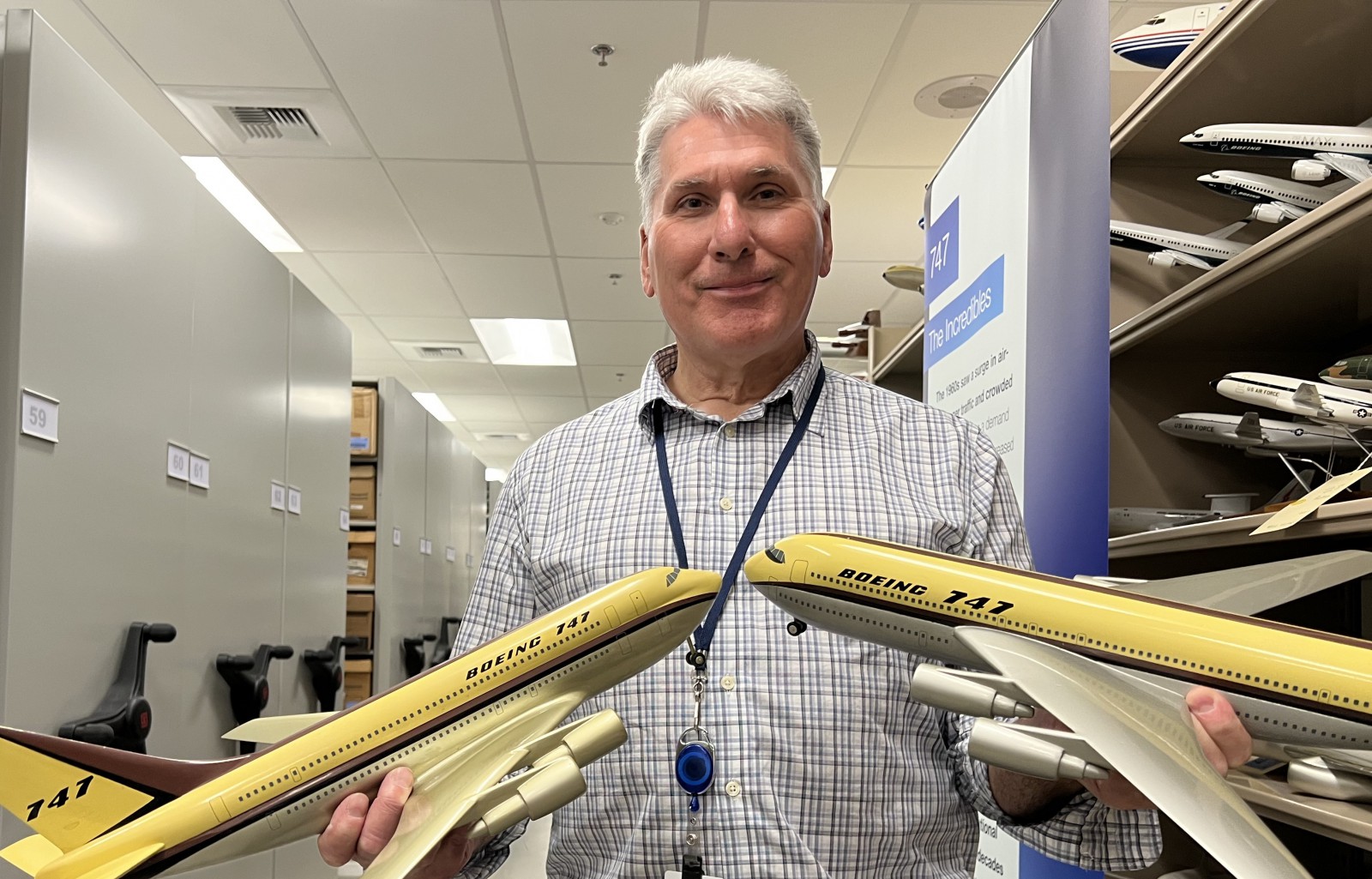AirlineRatings.com has been given an exclusive look at the new Boeing archives home which is under the leave and care of a team led by Michael Lombardi.
JOIN: AirlineRatings.com YouTube Channel
GET: Accurate MH370 Information From AirlineRatings.com Newsletter
SEE: GT’s Radar Slams Netflix MH370 Doco
In the second of a three-part series which delves deeper into the Boeing Archives and the company’s history with a chat with Lombardi.
Lombardi, 63, is only the third person holding the post of company historian and running Boeing Archive since 1994. Just recently, Lombardi and his team moved to new premises from their previous location in Bellevue, Washington in the Seattle area to Auburn, 40 km away, originally started as a Boeing factory built in 1966 for the Boeing 747 program.
The multi-million-dollar new Boeing Archive facility stores and preserves documents and artefacts going back all the way to Boeing’s founding days in 1916. Airlineratings was given unprecedented access and started with an interview with Michael Lombardi.
Airlineratings: Tell us a bit about how you got started and how company historians work
Michael Lombardi: I started to work at Boeing in the mailroom in 1979 while going to college, studying history. Then I got this job in 1994, it’s certainly a dream job. I even gave Airbus a tour here and explained what we do and how we do it. Many of us love Lockheed, especially for their Constellation, but they don’t have an established historical program like Boeing, wouldn’t it have been wonderful if they had saved all of its history? What we do here is very unique. One of the reasons we do it is that aviation is a celebration of the human spirit, it’s a history of human achievement, and it’s very inspiring and important to many people around the world.
Many companies see record-keeping only as a cost factor. Is that different at Boeing?
We changed direction and started to create money from our work for the company. We have brilliant engineers working here. Why should a new engineer, coming here fresh out of school, start from scratch? Why not stand on the shoulders of those brilliant minds and continue from there? Capturing all that engineering produced at Boeing is one of the main things we do. It’s part of the lean manufacturing process, we save time and money by having this information available for engineers when they develop a new product or process.
Can you give an example?
One is the Sonic Cruiser, we looked at a transonic aircraft in the 1970s, and some of what we learned then was applied to the Sonic Cruiser. We also help our legal team with a lot of thorough research we provide, where other companies don’t have that opportunity because they don’t have the records or the knowledge. That’s a way we have returned millions of dollars to Boeing or deferred a lot of legal matters, because of just being here. When our sales and marketing team is visiting a customer we can put together a history of that customer, and our relationship with him. Also as McDonnell Douglas is part of our heritage, as about every airline around the globe started with the DC-3. Even Lufthansa bought the Boeing 247 in 1934. And we can show them these records and show that we care.

This must be one of the largest aviation collections anywhere, can you provide some facts and figures?
We have over a hundred of these giant shelves, each over 20 meters long and about 75% are full of physical records, but there are also digital records, everything for the last 20 years is also stored digitally. This room has its own climate control, is kept at 65°F (18°C) and 40% humidity to preserve documents that are over a hundred years old, and we also have a cold room kept at 57°F (14°C) in the new facility here to preserve the films. It’s all enclosed, so no outside air comes in, no contamination. We have about 20,000 square feet (1858 m2). And we store also probably over 2,000 different aircraft models here, many are elsewhere in museums, it’s a multiple thousand altogether.

Tell us about your plan to make historic Boeing footage available again.
Our chief engineer and our leader of communication have each put in US$ 5 million for the digitization of our entire collection. That comprises ten million photographic negatives and probably close to 100,000 reels of motion pictures from 16 to 32mm film and many other formats. We have a specialized outside company that has set up shop right across the street to focus on digitizing this collection, it’ll take years, they already started. People have not seen these old reels in decades, and soon they will be available. This is one of the most exciting things I have seen in my career, this opportunity to finally see and share this.

Walking along your endless shelves of aircraft models here, it is striking how outlandish some are…
It’s important to encourage innovation among engineers, even to the point of being outlandish. In the early jet age, swept wings and hanging engines in pods on struts under the wings was all new in the B-47, Dash-80 and 707, going back to German aerodynamicists from the 1930s having worked on this. It was done in the 1940s and we still do it today, a brilliant idea. That was some incredible thinking outside the box.
But that was not always rewarded – neither by the public nor by the airlines…
At the time, nobody wanted the Boeing 707. The public was afraid of jets, they thought jets were very dangerous after the early Comet crashes. The airlines had all these prop-liners like Constellations and DC-6s, they didn’t want jets. Even the Air Force wanted turboprop aircraft, not jets. Yet Boeing came up with the Dash-80 and then the 707, which was so visionary, so forward-looking, that everyone said ‘That’s the future’. It changed everything and created the jet age. But initially, the airlines were outright hostile. Bill Allen took an incredible risk, saying ‘this is the future. And we bring the world along with us and help them understand.’ The only way to do that was to build this prototype from company money, they had to put the profits into building this one jet with probably the worst possible market that there has ever been for an airplane. And they did it and it worked and changed the world.
Boeing put off several radical changes over time…
Yes, think about the twin aisles in the 747 and the widebody. The thinking at the time was a single aisle, nobody had ever built a twin aisle. That was a moment of discovery when they thought about: How do we make a bigger airplane with basically the same footprint as the 707? It’s about allowing our designers to come up with whatever they think works, nothing is wrong. Bill Boeing put that into the DNA of our company that we look at those ideas, that we accept thinking crazy things, and some of them we see here at the Boeing archive.
What was the biggest gamble in Boeing’s history?
The biggest gamble in Boeing’s history was the 747, because there were so many different business pressures at the company at the time, and the market was fairly uncertain, other than Pan Am being sure they wanted that. The money was not there, so it was a tremendous financial effort and a huge technical effort as well.

Wasn’t the attempt at creating a giant supersonic airliner an equally daring undertaking?
In the history of flight, there has always been a quest to go further, faster, and higher, and in that context, the SST makes perfect sense. It’s a legitimate quest that you still see today with Boom Supersonic and others. That’s not going to go away. I think at some point we’ll skip supersonic and go right into hypersonic. In the 1960s here in the US you had the generation that had gone through the war and had this incredible “can do” attitude as seen in the Apollo program.
Was that echoed in the spirit at Boeing?
There was the same attitude here at Boeing, and behind them they had the confidence that they had just built the first jets and started the jet age. Boeing had an incredible track record of success, so there was this belief that they could do anything. And it’s still here, our engineers still have this insane belief that whatever they can think of, they can make it happen. It is embedded in our culture. But at the time, the company became a victim of its own success.
How did that happen?
The company was very busy and heavily expanding. Auburn where we are now was built in 1966 to support the 747 and the 737 and do the fabrication work on all these new airplane programs. The Renton site was expanded at the time with all these giant hangars for the 737 production, the entire Everett site was built from scratch at the time, all of this incredible expansion happened with a lot of money going into this. But it got well beyond what Boeing could do. Bill Allen had to personally go to a lot of banks to get the money to keep the 747 programs going. Boeing was in some financial difficulty really, and the recession, which ended the SST, was all built into that.
Sales were dismal, but Boeing held on to what it was doing
Both the 747 and the 737 were troubled programs at the time. In 1971 I guess we sold just 20 of the 737s, most of them to the Air Force as T43 trainers. And they realized this airplane isn’t a big seller after all. Think about this today, with almost 11,000 aircraft sold – they had almost ended the program then! But the leadership had this confidence to ‘just stick it out and we are gonna be OK.’ Again, you had this confidence, I think I comes from having this history of reoccurring instances of adversity.
Are there some underlying challenges you see appear time and again?
You need a certain amount of vision in designing an airplane, of looking forward to the future, what is this airplane going to do, and how are things going to change. You see that with the 747, which started as a passenger airplane, but as the SST at the time was expected to take over the bulk of that, so in anticipation they made that aircraft also into a great freighter. That is part of the challenge, understanding that these aircraft we design are going to be in service for a long time. You have to give credit to these early designers for having come up with this optimally designed airplane, so we haven’t got far from that design of the basic Boeing single-aisle fuselage. If it isn’t broken, don’t fix it, these are things that work well.
Will that ethos enable Boeing to tackle future challenges?
For the future, we all share that desire to fly greener. That’s really driving aviation now, and Boeing has a really good design to go forward with this truss-braced wing design of NASA and Boeing now called X-66A. It’s not new as such, it is the wing that the Wright brothers invented. A biplane is a truss, it’s basically now about building a biplane in a very modern, efficient sense, using that same idea of making a very strong structure. A beautiful aircraft with a very elegant, thin wing to reduce drag and increase efficiency that gives it even some transonic ability. In propulsion, we seem to be going back to open rotors that we tested in the late 1980s. We really need to look at what’s going to be a revolution, rather than just keep doing these modifications and evolutions of airplanes, that’s what our leaders are pushing for, we’ve been given that time to really push that idea.
Below: AirlineRatings.com Editor-in-Chief Geoffrey Thomas was given a first look at the new archives in January. Some of the more than 2000 models are in storage.

























